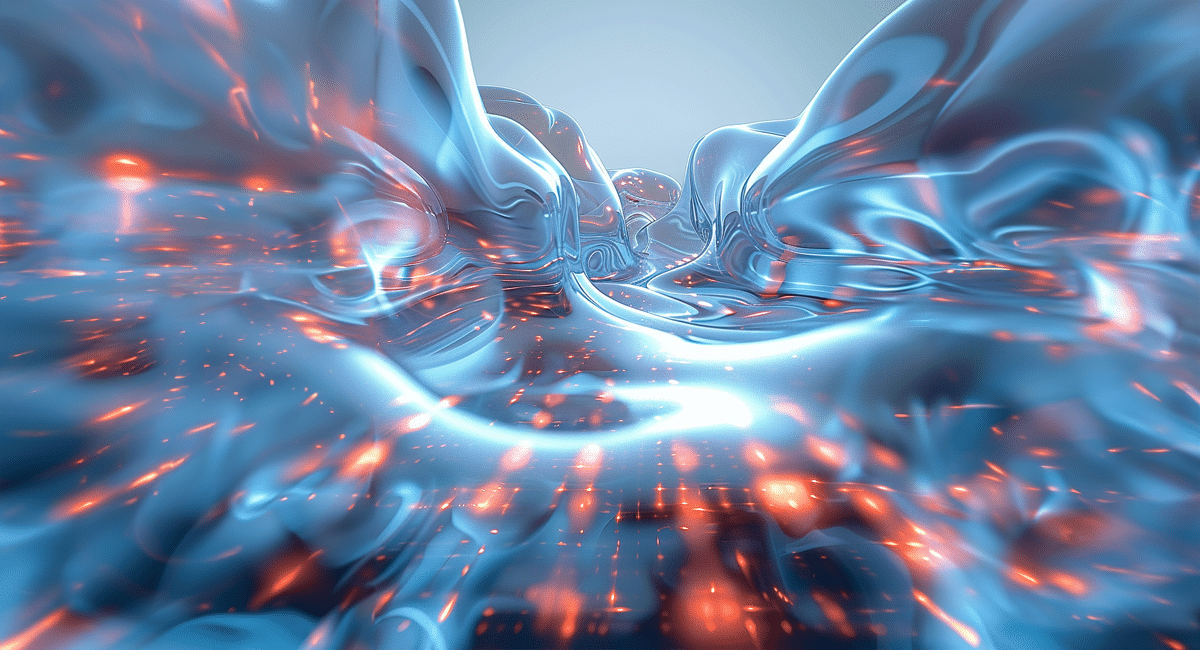In this article, we’ll dive deep into the nuts and bolts of both data mesh and data fabric, highlighting their unique philosophies, implementation strategies, and common applications. This will help you make informed decisions about which approach might be right for your organization’s data strategy.
What is Data Mesh?
Data mesh is a modern, innovative approach to data architecture that emphasizes decentralization and domain-oriented design.
Unlike traditional centralized data management systems, data mesh focuses on empowering individual business units within an organization, allowing them to take ownership of their data. This approach is rooted in the principle that data should be treated as a product, with a focus on delivering value to the end users.
In a data mesh architecture, data is managed and owned by the domain that produces it, rather than being centralized in a data lake or warehouse. Each domain is responsible for the quality, accessibility, and governance of its data, which is then shared across the organization.
This means that data is not just stored and managed, but it’s also thoughtfully curated to ensure it’s useful, reliable, and easily accessible to those who need it.
The adoption of a data mesh can lead to more agile and resilient data environments, fostering better collaboration between teams, enhancing data quality and accessibility, and ultimately driving more value from data assets.
How Does Data Mesh Work?
In a data mesh environment, data management is approached in a fundamentally different way. Instead of a centralized team managing all the organization’s data, data is seen as a distributed asset, with each business domain taking responsibility for its own data. Here’s how it typically works:
Domain Ownership
Different domains within an organization will be identified, each with its unique business logic and data. Each domain is the owner of that data. This means the people who work in that domain are responsible for the quality, accessibility, and governance of the data they generate.
Data as a Product
Data is treated as a product with a focus on the end-users. This involves ensuring the data is high quality, well-documented, and easy to access. Just like a product manager, think about the users of your data, their needs, and how they will interact with the data product.
Self-Service Data Platform
To support data as a product, each domain will use or contribute to a self-serve data platform. This platform enables users across the organization to discover, understand, and utilize data products without needing deep technical expertise or the direct involvement of the data team.
Federated Computational Governance
While data is owned by each domain, they don’t work in isolation. There’s a federated governance model in place ensuring that while each domain has autonomy, there are overarching standards and policies for data quality, security, and compliance. This ensures that while data is decentralized, it’s not the wild west – there’s order, consistency, and a shared commitment to maintaining a high-quality data ecosystem.
Interoperability and Integration
Even though data is decentralized, it’s crucial that it can be easily shared and used across domains. Data products are designed to be interoperable, with clear and consistent interfaces, and adhere to the organization’s standards for data sharing and integration.
Benefits of Data Mesh
Adopting a data mesh architecture offers several compelling benefits that can transform how your organization handles data, driving more value and fostering a culture of data-driven decision-making. Here are the key advantages you can expect:
Increased Agility
By decentralizing data ownership and management, each domain can respond more quickly to changes and needs within its scope. This means you can iterate, innovate, and deploy data solutions much faster than in traditional centralized models.
Improved Data Quality
Since the domain owner is closer to the context and usage of your data, they’re more likely to ensure its accuracy, completeness, and reliability. This proximity to data fosters a deeper understanding and commitment to maintaining high data quality standards.
Enhanced Collaboration
Data mesh promotes collaboration between domains by establishing clear interfaces and shared standards for data products. This makes it easier to share, access, and leverage data across different parts of the organization, fostering cross-functional insights and innovation.
Empowerment and Accountability
Since each domain owns its data, there’s a stronger sense of ownership and accountability. This empowerment encourages everyone to ensure their data products are valuable, reliable, and user-friendly, aligning with the broader goals of your organization.
Scalability
Data mesh architectures are inherently scalable. As your organization grows, you can add new domains without overburdening a central data team or infrastructure. This scalability supports your organization’s growth and evolution without compromising data quality or accessibility.
Better Data Discoverability and Access
With data as a product, you’ll focus on making your data easily discoverable and accessible to users who need it. This self-serve approach reduces bottlenecks and enables more people in your organization to leverage data for decision-making and innovation.
Enhanced Governance
While it might seem counterintuitive, the decentralized approach of data mesh can lead to better governance. With federated governance, you adhere to a consistent set of policies and standards while tailoring data management practices to your domain’s specific needs.
Resilience
Decentralizing data management can lead to a more resilient data architecture. By avoiding single points of failure and distributing data stewardship, you enhance the overall robustness and reliability of your organization’s data infrastructure.
Practical Examples of Data Mesh
Here are some practical examples that illustrate how data mesh can be implemented and the benefits it offers in real-world scenarios:
E-commerce
An e-commerce company has separate teams for sales, inventory, customer service, and marketing. Each team has its own data systems, which are not well-integrated, leading to inconsistent data and inefficient decision-making. Here’s how the data mesh is implemented:
- Sales Domain: Manages sales data, providing insights into customer purchasing patterns, revenue, and product performance.
- Inventory Domain: Oversees stock levels, supplier data, and logistics information, ensuring product availability aligns with demand forecasts.
- Customer Service Domain: Handles customer interactions, feedback, and support tickets, offering insights into customer satisfaction and common issues.
- Marketing Domain: Manages campaign data, customer engagement metrics, and market research to tailor marketing strategies effectively.
This system offers improved data quality and accessibility (as each domain curates its data), faster and more informed decision-making in each domain, and enhanced collaboration, with each domain able to access relevant data from others.
Manufacturing Company
A global manufacturing company has separate divisions for production, supply chain, quality control, and sales. The lack of integrated data systems leads to production inefficiencies, inventory issues, and missed sales opportunities. Here’s how the data mesh is implemented:
- Production Domain: Manages data related to manufacturing processes, machine performance, and production schedules.
- Supply Chain Domain: Oversees logistics, supplier data, and inventory levels, optimizing the supply chain.
- Quality Control Domain: Handles product quality data, feedback, and improvement processes, ensuring product standards.
- Sales Domain: Manages customer data, sales trends, and market analysis to drive sales strategies.
This approach offers increased operational efficiency with better-aligned production and supply chain processes, enhanced product quality and customer satisfaction through targeted quality control measures, and improved sales strategies and market responsiveness.

Data Mesh vs. Data Lake
Data mesh and data lake represent two distinct approaches to data architecture, each suited to different organizational needs and philosophies.
A data lake is a centralized repository that allows you to store all your structured and unstructured data at any scale. It’s like a large container where data from various sources is poured in its raw form, and later processed and structured as needed.
This approach centralizes data management, making it easier to store vast amounts of data, but it can lead to issues with data silos, governance, and quality if not managed properly.
On the other hand, data mesh adopts a decentralized approach, emphasizing domain-specific ownership and management of data. In a data mesh, data is treated as a product, with each business domain responsible for its own data, from creation to consumption.
This approach fosters a more responsive and agile data environment, as each domain has control over its data processes and can tailor its data products to specific needs.
What is Data Fabric?
Data fabric is an architectural concept designed to offer a cohesive and efficient way to handle the volumes and varieties of data across an organization. It serves as an integrated layer that spans across all data sources and storage environments, whether they’re on-premises or in the cloud, structured or unstructured.
This approach facilitates seamless data access, integration, and management, enabling users to interact with data without worrying about its underlying complexity or location. It’s particularly beneficial in complex data landscapes, where it harmonizes diverse data ecosystems, simplifying data workflows and boosting overall data utility and value.
How Does Data Fabric Work?
Data fabric aims to simplify data access and management by creating a seamless layer that spans across various data sources and platforms. Here’s how data fabric works:
Integration of Data Sources
Data fabric connects disparate data sources, whether they are on-premises or in the cloud, structured or unstructured, or in different formats. This integration allows for seamless data access and movement across the organization.
Data Abstraction
Data fabric abstracts the underlying complexity of data systems, providing users with a simplified view of the data landscape. This abstraction enables users to access and interact with data without needing to understand the details of where and how the data is stored.
Semantic Layer
Data fabric often includes a semantic layer that translates data into a common language or model, making it easier for users to discover and understand data across different domains and sources.
Data Governance and Security
It incorporates governance and security policies to ensure data is managed and accessed in compliance with regulations and organizational standards. This includes aspects like data quality, privacy, lineage, and access controls.
Data Orchestration and Automation
Data fabric can automate data orchestration processes, such as data integration, transformation, and delivery, reducing manual efforts and accelerating data workflows.
AI and Machine Learning Integration
Advanced data fabrics leverage AI and machine learning algorithms to automate data management tasks, enhance data discovery, and provide predictive insights, making the data fabric more intelligent and responsive to business needs.
Self-Service Data Access
By providing a unified and user-friendly interface, data fabric allows business users, analysts, and data scientists to easily access and work with data, fostering a more data-driven culture within the organization.
Real-Time Data Processing
Data fabric can enable real-time data processing and analytics, providing businesses with timely insights and the ability to respond quickly to changing conditions or opportunities.
Benefits of Data Fabric
Data fabric offers a multitude of benefits that address various challenges associated with managing large and complex data landscapes. Here are some of the key advantages:
Enhanced Data Integration
Data fabric seamlessly integrates disparate data sources, whether they’re on-premises, in the cloud, or at the edge. This integration allows organizations to access and combine data from various sources effortlessly, facilitating a more comprehensive data analysis.
Improved Data Accessibility and Sharing
By providing a unified and simplified access layer, data fabric makes it easier for users across the organization to find, access, and share data. This democratization of data enhances collaboration and helps foster a data-driven culture.
Increased Data Agility
Data fabric’s ability to rapidly integrate, process, and deliver data means that organizations can respond more quickly to market changes, customer needs, and internal requirements. This agility is crucial in today’s fast-paced business environment.
Advanced Analytics and Insights
With data more readily accessible and integrated, organizations can leverage advanced analytics, artificial intelligence, and machine learning to generate deeper insights, predict trends, and make more informed decisions.
Streamlined Data Management
Data fabric automates many aspects of data management, from integration to quality control, reducing the manual effort required and minimizing the risk of errors. This efficiency can lead to significant cost savings and allow data professionals to focus on higher-value activities.
Robust Data Governance and Compliance
Ensuring consistent data governance and compliance is a critical benefit of data fabric. It enforces policies across all data sources and uses, maintaining data quality, privacy, and regulatory compliance.
Enhanced Data Security
By centralizing data management, data fabric provides stronger security measures, ensuring that data is protected against unauthorized access and breaches. It also offers better control and visibility over who is accessing what data.
Scalability and Flexibility
Data fabric is designed to scale with your organization’s needs, accommodating increasing volumes of data and evolving data types. It’s also flexible enough to adapt to new technologies and data sources, future-proofing your data infrastructure.
Practical Examples of Data Fabric
Here are some practical examples illustrating how data fabric can be implemented across different industries and scenarios to drive value and improve data management:
Financial Services
A multinational bank deals with diverse data types across various systems, including customer transactions, market data, regulatory compliance information, and more. Here’s how they would implement data fabric:
- Integrate data from different systems, including core banking systems, CRM, and regulatory databases, into a unified data fabric.
- Implement real-time data processing to monitor transactions for fraudulent activities and ensure immediate response.
- Enable seamless data access for analysts to perform market trend analyses, customer behavior studies, and risk assessments.
This system offers enhanced fraud detection through real-time data analysis, improved customer service with a 360-degree view of customer interactions, and streamlined regulatory compliance and reporting.
Retail Chain
A retail chain wants to unify data from its online store, physical store sales, inventory management, and customer feedback to optimize operations and customer satisfaction. Here’s how they would implement data fabric:
- Integrate data from e-commerce platforms, POS systems, inventory management, and customer feedback into a single data fabric.
- Enable real-time inventory tracking and sales data analysis to optimize stock levels and reduce out-of-stock incidents.
- Provide insights into customer preferences and feedback trends to improve product offerings and customer service.
This approach offers real-time inventory and sales insights to reduce stockouts and overstock situations, enhanced customer understanding, and improved operational efficiency across online and offline channels.

Differences Between Data Mesh vs. Data Fabric
Data mesh and data fabric are two approaches to data architecture that offer distinct paradigms for managing and utilizing data within organizations. Understanding their differences will help you find the approach that’s suitable for your needs.
Data mesh is a decentralized approach emphasizing domain-driven design. Data is treated as a product. Each domain is responsible for managing its data, ensuring its quality, and making it accessible. This fosters a more agile and responsive data environment, where each domain can rapidly adapt to changes and innovate independently.
On the other hand, data fabric provides an integrated and coherent layer over an organization’s data systems. It focuses on connecting different data sources and provides capabilities such as data integration, governance, and orchestration. Data fabric is typically more centralized than data mesh, offering a unified platform that facilitates data access and across the organization.
When to use Data Mesh
- Your organization operates with a high degree of domain autonomy, and you want to empower these domains to own and manage their data.
- There is a need for rapid innovation and agility within individual domains, requiring them to respond quickly to changes without being hindered by centralized data management bottlenecks.
- You aim to foster a culture of accountability for data quality and accessibility at the domain level.
When to Use Data Fabric
- Your organization seeks to integrate a vast array of data sources and types, requiring a unified platform that provides seamless access and integration across these sources.
- There is a strong need for centralized data governance and management to ensure data quality, security, and compliance across the organization.
- You are looking to enable self-service data access and analytics so users across can easily discover and use data without navigating complex data landscapes.
Data Mesh vs. Data Fabric in Your Organization
When considering Data Mesh versus Data Fabric, organizations should prioritize aligning their choice with their specific data management needs, operational structures, and long-term strategic goals.
Data Mesh, with its decentralized, domain-oriented approach, is particularly well-suited for organizations looking for agility, innovation, and empowerment at the domain level.
Conversely, Data Fabric offers a more centralized, integrated solution that can provide a comprehensive and cohesive view of an organization’s data landscape, ideal for enterprises seeking a unified, efficient data management and integration framework.
Ultimately, the decision between Data Mesh and Data Fabric should not be about selecting the superior technology, but about choosing the framework that aligns best with your organization’s unique context, challenges, and objectives.




